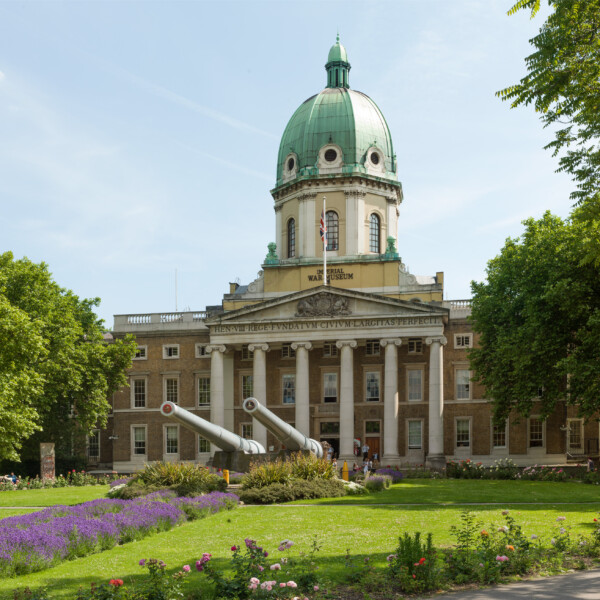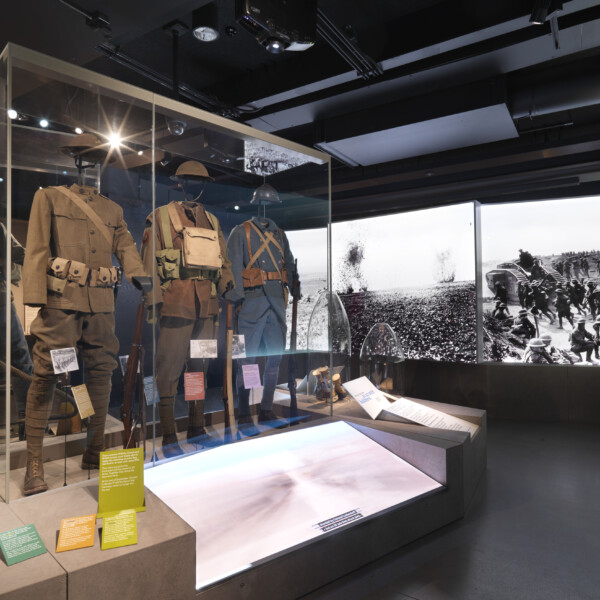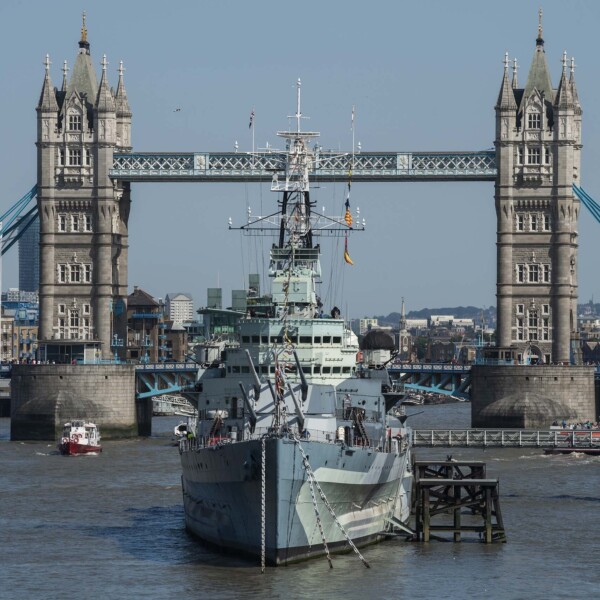Lizzy’s journey into visitor experience
Lizzy Whirrity has over 20 years experience in the arts working with visitors and the teams that deliver visitor experience. It began when she was 14 with a visit to the Tate Gallery (now Tate Britain) in London. Lizzy was struck by the Rothko room – it was dark and full of huge, expansive canvases with masses of colour.
Lizzy went on to graduate in performance and live art, followed by a master’s in fine art. Although she did some great little pieces of work, Lizzy knew she wasn’t cut out for it. She ended up working in galleries, cinemas, and festivals before curating contemporary art shows. Moving into membership, and later operations, she started on an administrative path.
Visitor experience and programming soon followed, but 20 years ago, Lizzy had no idea it was even a thing you could do. For Lizzy, it’s a wonderful combination of people, learning, history, psychology, and art.
About the five museums
A big part of the visitor experience at IWM is being immersed in the stories that come out of conflict. Volunteers and visitors really get into it, and there’s a powerful, personal interaction. There are five branches:
- Lambeth Road – Located in a park in Bethlem, south London, this former hospital was once more commonly known as ‘Bedlam’. Today, people refer to it as ‘the one with the big guns’.
- IWM North – Built 20 years ago, the newest IWM building was designed by Daniel Libeskind. From the outside, it looks broken. On the inside, it’s a big, beautiful open space.
- Duxford – A working airfield near Cambridge, this mile-long site houses exhibition spaces in hangars.
- Church War Rooms (CWR) – A bunker beneath the HM Treasury, complete with the secret room where Churchill would speak to US President Roosevelt.
- HMS Belfast – The beautiful warship permanently moored on the River Thames since 1971. Visitors get an experience of what life was like on board the naval vessel.

A definition of visitor experience
Visitor experience is about giving visitors – anyone coming through the door plus the people you want to come through the door – a good time. The key is to consider what each audience wants and needs to have a good time. The visitor experience at a museum is very different from a hospital, for example.
It’s like a pyramid of needs, which differs depending on the type of organisation. Everything ties into what an organisation wants and needs the experience to be. In fact, it all starts with the organisation, and ‘why’ the people in that organisation – from marketing to front of house – do what they do. When the ‘why’ is clear, it’s easy for everything else to slot into place.
Visitor experience impacts many different disciplines. This makes it both difficult and fun at the same time. When it’s done well, it ensures that people keep coming back. If people have a good time, they tell their friends and family about the experience. It’s not easy to make that happen when your exhibits are about war and conflict.

Creating a world-class visitor experience
A lot of care and attention go into the curation of complex storytelling about different conflicts over the last hundred years. But by telling these difficult stories, there’s some hope for the future; we’ve got to know how we got here to know where we’ve got to go next.
Wayfinding is one of the most important things when it comes to visitors’ experience because it’s about the psychology of the people coming in through the door. There’s a lot of semiotics at play.
Different museums have different identities. Delivering a consistently world-class visitor experience across multiple locations is no easy feat. It takes a great team to deal with the different environments from an airfield to a bunker to an ex-hospital, to a ship. Every site has its own challenges.
For example, Lambeth Road is a former hospital that wasn’t designed to welcome and security check museum visitors. Duxford is a working airfield; visitors have no idea what they’ll see flying. Sometimes a cruise ship will be docked beside HMS Belfast.
Great visitor experiences are about trusting that people on the ground can deliver an experience that lives up to the standards set. On top of that, each visitor experience needs to be tailored to the relevant historical, cultural, and architectural setting.

The future of visitor experience
Events over the last few years have reshaped attitudes towards the inclusivity of visitor experiences, from the way history is presented to the public to accessibility features such as braille. At the same time, IWM isn’t just competing with other museums, it’s competing with everything else that’s vying for people’s attention, from the Eurovision Song Contest to films.
There’s a definite shift towards more inclusive and personalised experiences in visitor experience. Technology continues to have an impact here – including Virtual Reality (VR) and Augmented Reality (AR) – reaching audiences outside the museum space, giving extra access beyond the scenes. In a way, the museum steps outside itself into the community.
Many of the IWM sites are located within communities, and it’s about getting those communities to come through the doors and feel welcomed, even if they’re just there to use the café. Without visitors – and visitor experience – IWM would just be a warehouse for 33 million historical artefacts. It’s all about the people and creating a seed of intrigue or curiosity.

It’s all about people
When you look at review sites – like Trip Advisor – much of the IWMs’ popularity is down to the dedication of its volunteers. Going forward, museums have to maintain their appeal to changing audiences and changing demographics, trying to get more online so that they can always be accessible. It’s about thinking more about the people who don’t visit and why they don’t visit.
Lizzy uses external consultants – such as Endpoint – to bring in expertise and specialism. That’s especially powerful in disciplines such as wayfinding when everyone in the organisation is working really hard to make it work. Different people have different perspectives. With wayfinding, everyone has an opinion – especially when it comes to things like the naming conventions of rooms. Consultants are a neutral voice that can help channel and focus differing ideas about how things should be done.
To explore new exhibitions coming up at Imperial War Museums, visit https://www.iwm.org.uk/



